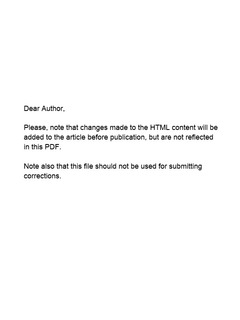| dc.contributor.author | Mohammadi Bazargani, Mitra | |
| dc.contributor.author | Rohloff, Jens | |
| dc.date.accessioned | 2019-11-05T10:16:02Z | |
| dc.date.available | 2019-11-05T10:16:02Z | |
| dc.date.created | 2015-09-26T19:38:10Z | |
| dc.date.issued | 2015 | |
| dc.identifier.citation | Food Control. 2015, 61 156-164. | nb_NO |
| dc.identifier.issn | 0956-7135 | |
| dc.identifier.uri | http://hdl.handle.net/11250/2626569 | |
| dc.description.abstract | Bacterial biofilms pose health risks in clinical environments, food industry and drinking water systems. Here, we investigated in vitro antibiofilm activities of essential oils (EO) and plant extracts of peppermint (Mentha × piperita L.), coriander (Coriandrum sativum L.), and anise (Pimpinella anisum L.). Minimum inhibitory concentration assay (MIC) was carried out using two-fold serial dilution method and MTT assay against gram-positive (Staphylococcus aureus) and gram-negative (Escherichia coli) bacteria. Biofilm growth and development were assessed using crystal violet (CV) and XTT reduction assays. Antibacterial activity was observed for almost all plant extracts and all EOs against both bacterial strains with stronger activity against S. aureus. All EOs (at MIC value of 0.08%-0.63%) and 8 out of 14 plant extracts (at MIC value of 2-4 mg/ml) inhibited bacteria cell attachment of both bacteria. CV and XTT reduction assay for the plant extracts and EOs with inhibition of bacteria attachment by at least 50%, demonstrated that coriander EO had the highest antibiofilm activity against biofilm formed by both tested bacteria (S. aureus and E. coli) at lowest MIC value 0.08% and 0.16% (v/v), respectively, indicating further investigations due to the oil’s high antibiofilm activity potential. | nb_NO |
| dc.language.iso | eng | nb_NO |
| dc.publisher | Elsevier | nb_NO |
| dc.rights | Attribution-NonCommercial-NoDerivatives 4.0 Internasjonal | * |
| dc.rights.uri | http://creativecommons.org/licenses/by-nc-nd/4.0/deed.no | * |
| dc.title | Antibiofilm activity of essential oils and plant extracts against Staphylococcus aureus and Escherichia coli biofilms | nb_NO |
| dc.type | Journal article | nb_NO |
| dc.type | Peer reviewed | nb_NO |
| dc.description.version | acceptedVersion | nb_NO |
| dc.source.pagenumber | 156-164 | nb_NO |
| dc.source.volume | 61 | nb_NO |
| dc.source.journal | Food Control | nb_NO |
| dc.identifier.doi | 10.1016/j.foodcont.2015.09.036 | |
| dc.identifier.cristin | 1275595 | |
| dc.description.localcode | © 2015. This is the authors’ accepted and refereed manuscript to the article. This manuscript version is made available under the CC-BY-NC-ND 4.0 license http://creativecommons.org/licenses/by-nc-nd/4.0/ | nb_NO |
| cristin.unitcode | 194,66,10,0 | |
| cristin.unitname | Institutt for biologi | |
| cristin.ispublished | true | |
| cristin.fulltext | postprint | |
| cristin.qualitycode | 1 | |

